With one in seven Brits choosing to drink at home, could you be missing out on lucrative wine storage sales? Philippa Turrell investigates.
With sponsored sobriety now becoming key annual dates in the calendar, and the continuing decline in pub numbers, you could be forgiven for thinking the British love affair with alcohol was over. Not. So. Fast.
According to recent research from YouGov, one in seven Brits will drink at home. The data also revealed older, rather than younger people, would tend to skip the pub for the sofa, with over 55s most likely to drink predominately at home (45%), followed by the 45-54 age group at 22% and the 35-44 age group at 15%.
And, interestingly, the most popular drinks to imbibe at home don’t even mirror the pub but restaurants. According to the Wine and Spirits Trade Association (WSTA), the most popular drinks in both are red wine, white wine and lager. It surely is alcoholic evidence of the continuing trend towards home cooking and entertaining?
Sponsored Video
As the WSTA reports 60% of UK adults drink wine, which is the equivalent of 31million people, could kitchen designers and retailers be introducing wine storage into more kitchen project sales?
Certainly product manager at Caple Luke Shipway believes so, as he states: “Wine cabinets are now being seen by consumers as an essential part of their kitchen, particularly among those that enjoy home entertaining.”
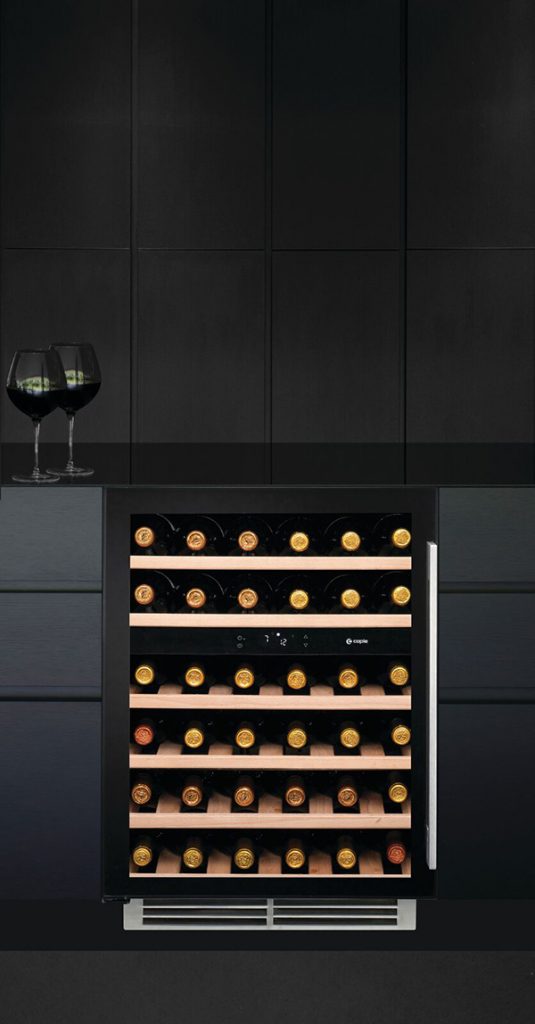
Part of Caple’s refreshed wine cabinet collection is the Sense Wi6134 under counter wine cabinet, which holds up to 45 bottles. Operated by touch control, it has two temperature zones and features compressor cooling technology to maintain constant temperatures.
And his view is re-iterated by product manager of Miele Max McCormick who says wine storage is now an expected specification in new build homes: “A large sector for Miele that continues to grow is the residential contract market with many developers specifying wine conditioning units in developments, showing that consumers are starting to expect this level of specification.”

The integrated KWT6422iGS Wine Conditioning Unit from Miele can hold up to 33 bottles and features two temperature zones. It has a UV glass doors and Active AirClean filter to protect your wine from unpleasant smells.
Wide appeal
The market has opened up for wine storage sales, offering kitchen designers working at most price levels the option to include it in their projects. Max McCormick from Miele continues: “Previously reserved for high end kitchens, but now with price-led options available, the market includes new consumer groups.
Young profesionals who want to have separate storage for their wine, but also see it as a status symbol can quite easily find a wine cooler to fit their budget, kitchen styles and size. This has really broadened the demographic, widening the age gap and location of customers.” It’s no surprise then that wine storage sales are booming. According to business development manager of KitchenAid Alexander Smith: “Overall sales for wine storage appliances have subsequently grown, year-on-year by nearly 50% in volume.”
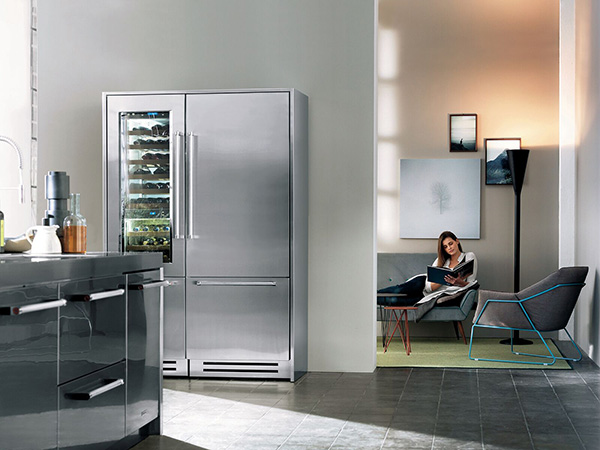
The KitchenAid freestanding Vertigo wine cellar (KCZWX 20900L) has three compartments: two wine cellars, which together store up to 81 bottles of wine. It has a dual compressor, ventilation with carbon filters to aid air circulation and a triple glazed UV glass door.
Aiding design
But what this diverse consumer base seems to demand is that the customer is focused on not losing out on too much cabinet space. Max McCormick adds: “Many are looking to incorporate wine storage into their kitchen design, but without compromising on cabinet or other appliance space. This is where built-in models come into play and our 450mm niche model, as well as 880mm and 17800mm provide the best of both worlds.”
But adding a small wine cabinet can also help designers and retailers in the planning of the kitchen. Marketing manager of CDA Steve Corbett explains how, when he comments: “Smaller slimline models make a great and practical filler where there is a gap in kitchen layout.” He adds: “While the larger ones are an impressive feature thanks to interior lighting.”
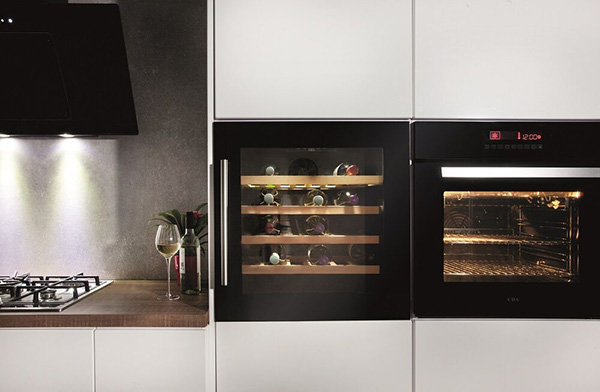
The integrated FWV600BI wine cooler from CDA measures 600mm wide and holds 40 bottles of wine on slide out, wooden shelves. It has a UV glass door, humidity controls and can operate between 5-22°C.
Short or long-term
However, where the consumer groups will differ is the investment into wine and accomplished kitchen professionals will ensure the chosen model will suit the needs, not just the budget, of their clients. Alexander Smith reminds kitchen designers and specifiers that there is a difference in requirements: “The market offers models that range from the basic chiller to professional storage units and cellars that offer greater versatility and long-term storage facilities.”
He continues: “At entry level, the wine cooler is often just that, relieving the pressure of storage on the fridge rather than be responsible for long-term conservation, preservation and maturation of fine wines.”
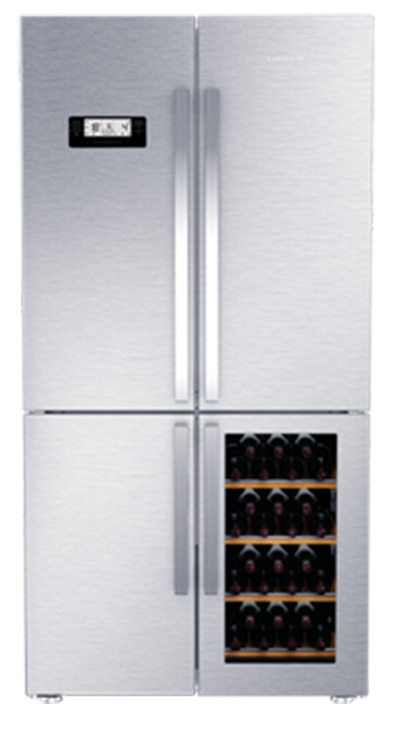
The Grundig Wine Cooler Fridge Freezer (GQN21220WX) features dedicated wine storage, as part of a cooling appliance. It provides storage for up to 20 bottles and can operate between 5-20°C.
And Luke Shipway of Caple points to the features that promote long-term wine storage, as he points out: “Wine cabinets, which will mimic the conditions of a wine cellar, are the latest trend as they ensure your wine remains at a constant temperature, humidity and away from light. Models with anti-vibration gaskets and low vibration compressors have become more sought-after because these help to prevent disturbance to the wine’s sediment balance, which will affect the flavour.”
But the differing wine demands can be a perfect sales tool for the kitchen design professional. It means that top-end clients shouldn’t be tempted to trade down for a more cost-effective appliance, whereas it could give the potential for a designer to encourage a client to trade up.
Smart storage
And wine storage continues to evolve, with manufacturers making advances in quieter, more energy-efficient models but with a greater capacity but still with dual temperature zones. However, as the technology is slowly set to filter downmarket, what will drive the design and specification of top-end wine storage sales?
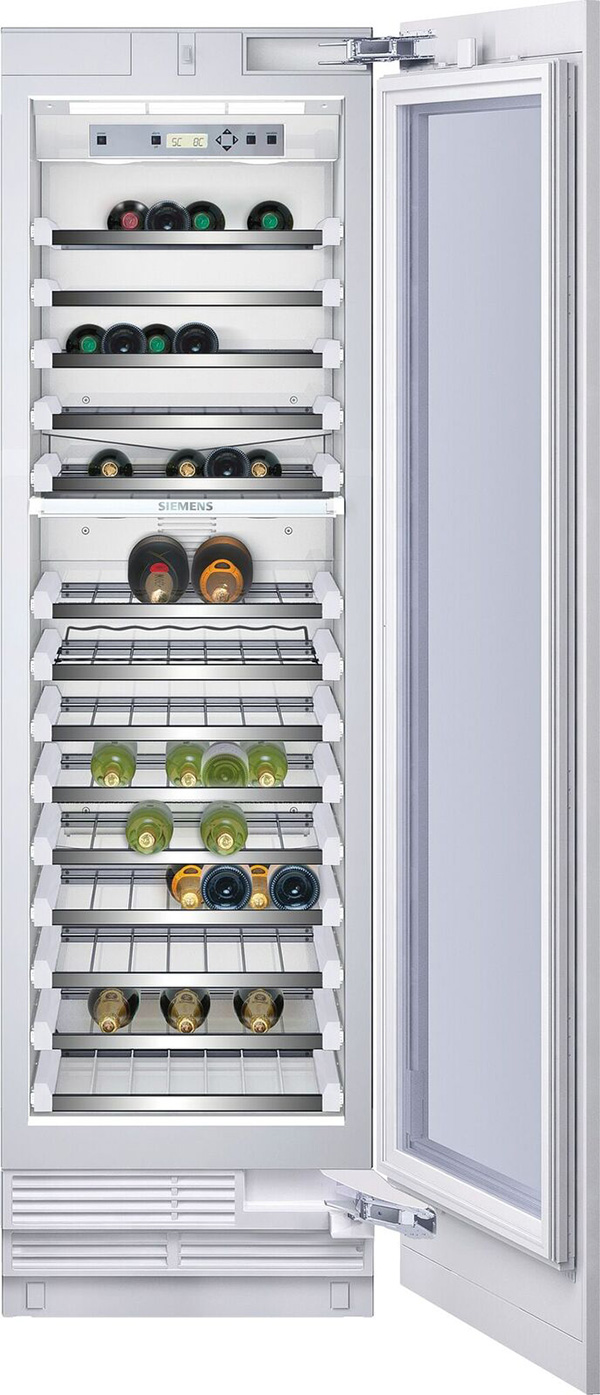
The Siemens iQ700 aCool Wine Cooler can be installed next to a range of aCool appliances or fitted on its own and can hold up to 96 wine bottles. It features two independently controlled zones, glass door with UV filter and operates at 42dB.
Unsurprisingly, and similarly to many household appliances, the Smart Home may start to have a greater influence. Max McCormick explains: “From a Smart Home point of view, wine conditioners definitely play a part. From keeping stock, to recommending wines for meals and occasions, allowing users to change the parameters, helping to ensure the perfect glass is always available are just some of the benefits we will see.” He continues: “Development at the top end will continue to see more functional Sommelier Sets offering greater versatility, incorporating other delicate luxuries such as humidors for cigars.”
Certainly, at whatever level of the market of a kitchen design professional may serve, wine storage is only going to grow in importance. And Max McCormick agrees staying they “will remain on consumers’ wish lists as the category and wealth of options continues to grow.”
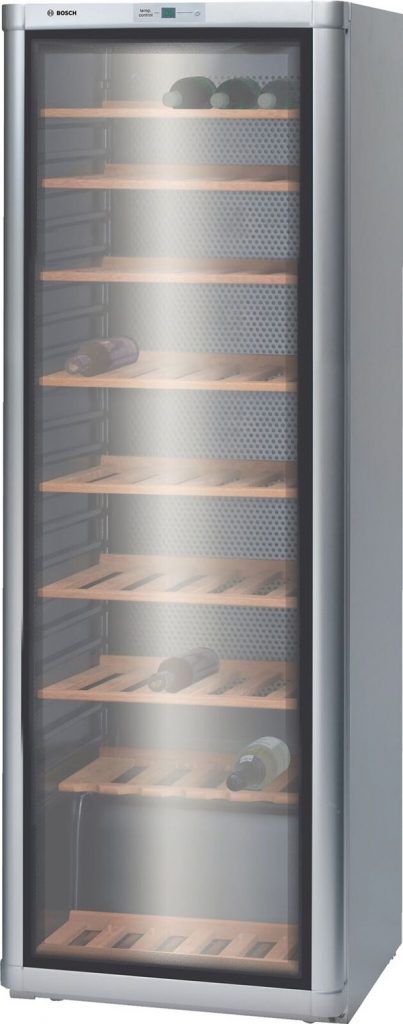
The Serie 4 (KSW30V81GB) wine storage appliance from Bosch has a capacity of 360 litres and can hold up to 120 wine bottles. It has a UV protected glass door, LED display and a temperature range from 6-18°C.
Accomplished kitchen designers will maximise on the opportunity to sell an additional appliance into a kitchen project. Whereas retailers who may be less experienced, could find wine storage a real (bottle) opener to more profitable sales.



